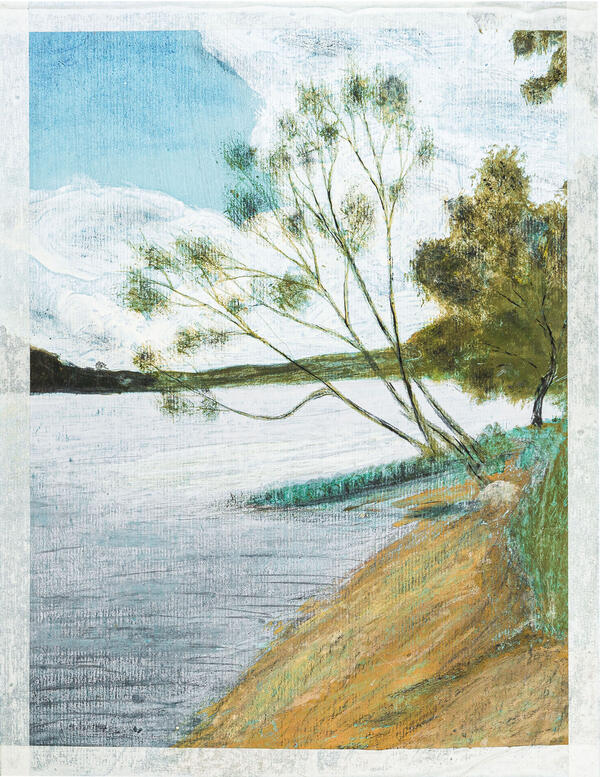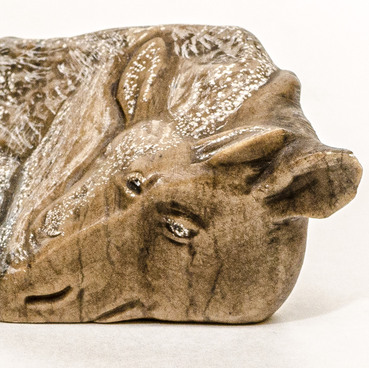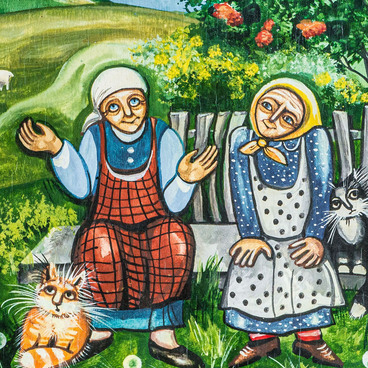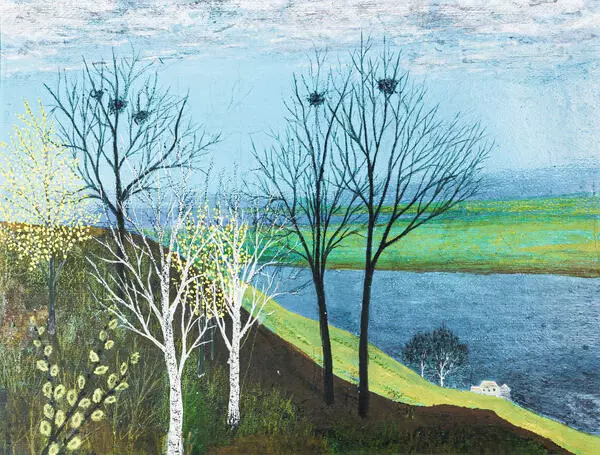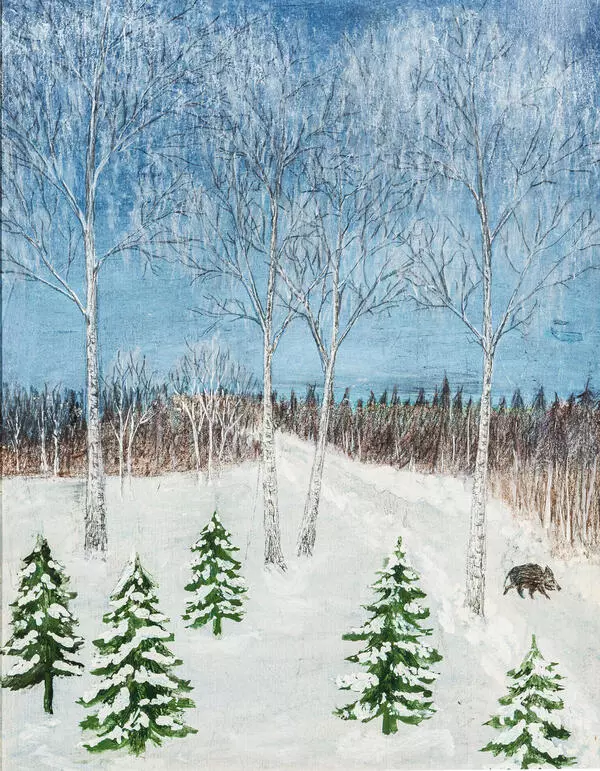Many paintings of the amateur artist Alexandra Utkina were inspired by the Ural village of Klenovskoye (known as Klenovoye), where she had been living for many years.
Klenovskoye rural settlement is located on the western slope of the Ural Mountains in the floodplain of the Biserti River, the right tributary of the Ufa River. Near Klenovskoye there is the mouth of the Put River, the Shigaya and Chernaya rivers, several large springs and artificial ponds. The settlement is surrounded by numerous pines, limes, birches, and aspens. In summer, everything is in bloom there, there are heavy snowfalls in winter, and in spring full-flowing streams fill the rivers.
The naive landscapes of Alexandra Utkina reflect the severity and originality of the Ural nature.
Alexandra Utkina found herself in the Urals almost immediately after the Great Patriotic War. In 1941, she had to leave her studies at the Faculty of Natural Geography of the Blagoveshchensk State Pedagogical University. The girl graduated from nursing courses and went to fight in the army. During the war, Utkina served as the commander of the department of the 175th Artillery Battalion of the 2nd Far Eastern Army and participated in combat operations against the Kwantung Army of Japan. Here she met Sergeant Vasily Utkin, her future husband.
After the war, Utkina returned to Blagoveshchensk to finish her studies, and then together with her husband went to his homeland, the Urals. In Klenovoye, she taught biology and geography at school, worked together with students on state farm fields. Alexandra Iosifovna moved to Yekaterinburg only in 1986, after her husband’s death. At the same time, she painted her first picture. Later, she recalled in an interview,
Klenovskoye rural settlement is located on the western slope of the Ural Mountains in the floodplain of the Biserti River, the right tributary of the Ufa River. Near Klenovskoye there is the mouth of the Put River, the Shigaya and Chernaya rivers, several large springs and artificial ponds. The settlement is surrounded by numerous pines, limes, birches, and aspens. In summer, everything is in bloom there, there are heavy snowfalls in winter, and in spring full-flowing streams fill the rivers.
The naive landscapes of Alexandra Utkina reflect the severity and originality of the Ural nature.
Alexandra Utkina found herself in the Urals almost immediately after the Great Patriotic War. In 1941, she had to leave her studies at the Faculty of Natural Geography of the Blagoveshchensk State Pedagogical University. The girl graduated from nursing courses and went to fight in the army. During the war, Utkina served as the commander of the department of the 175th Artillery Battalion of the 2nd Far Eastern Army and participated in combat operations against the Kwantung Army of Japan. Here she met Sergeant Vasily Utkin, her future husband.
After the war, Utkina returned to Blagoveshchensk to finish her studies, and then together with her husband went to his homeland, the Urals. In Klenovoye, she taught biology and geography at school, worked together with students on state farm fields. Alexandra Iosifovna moved to Yekaterinburg only in 1986, after her husband’s death. At the same time, she painted her first picture. Later, she recalled in an interview,

